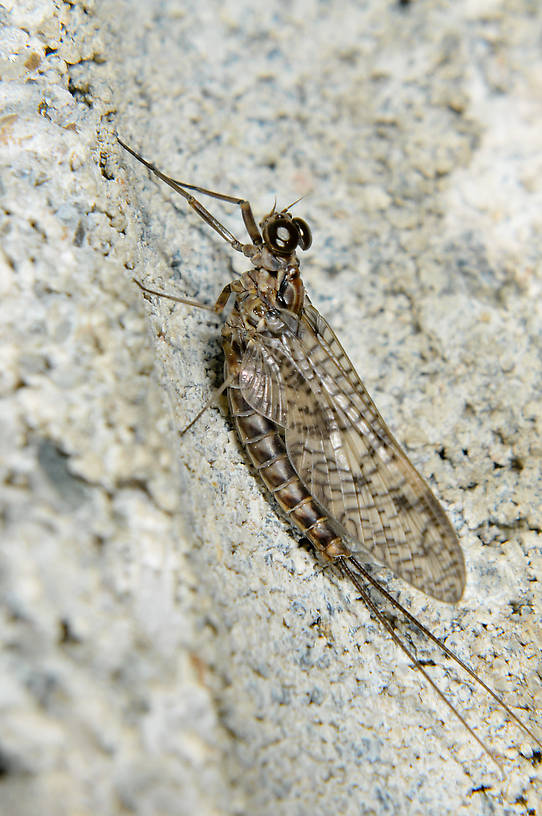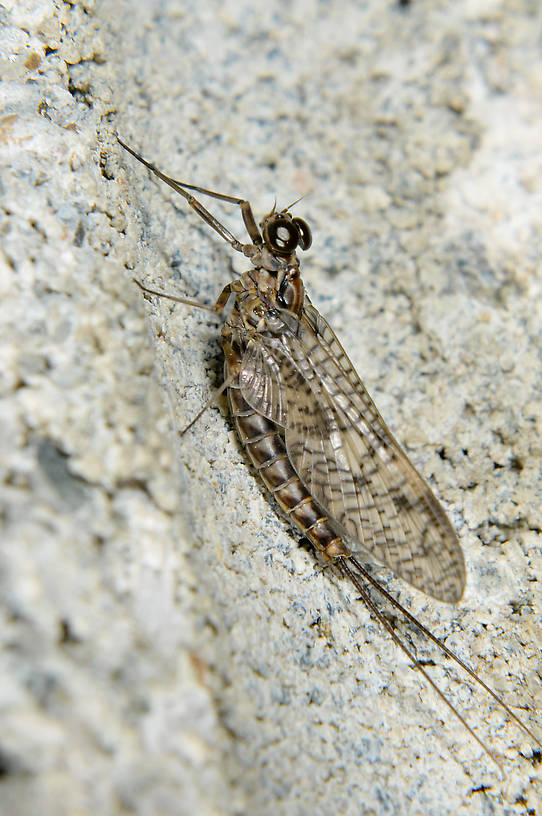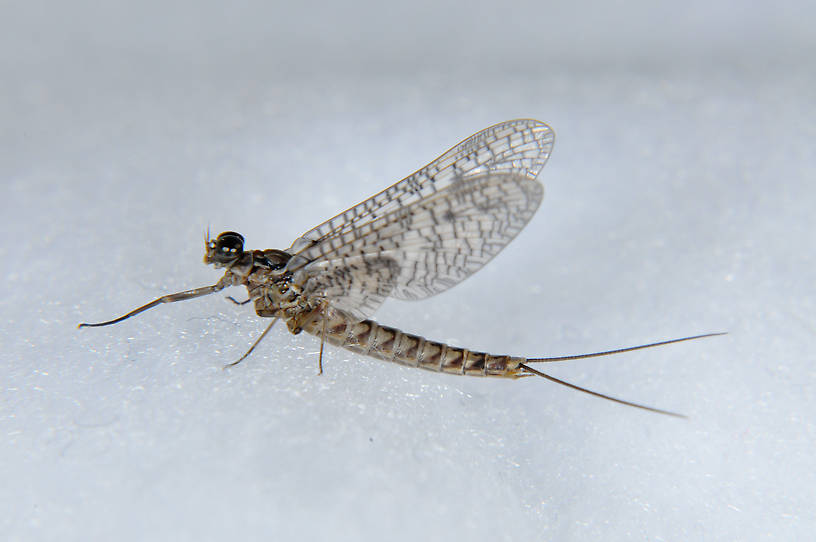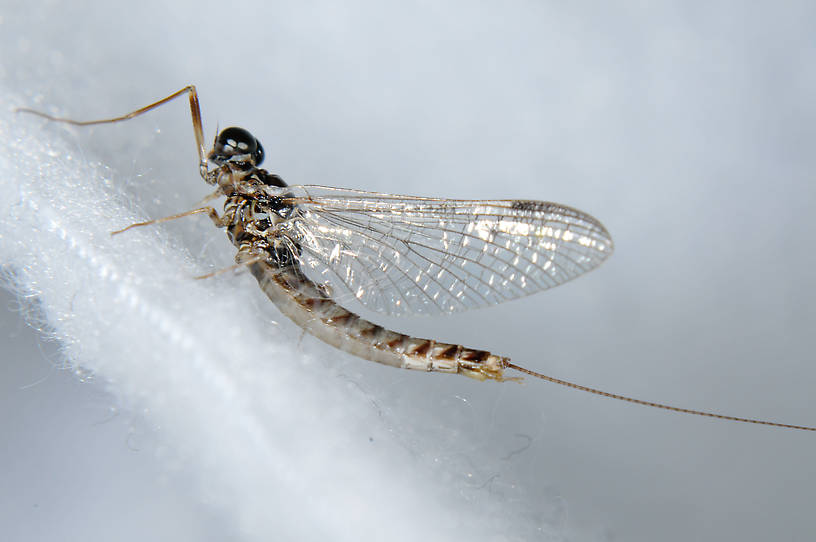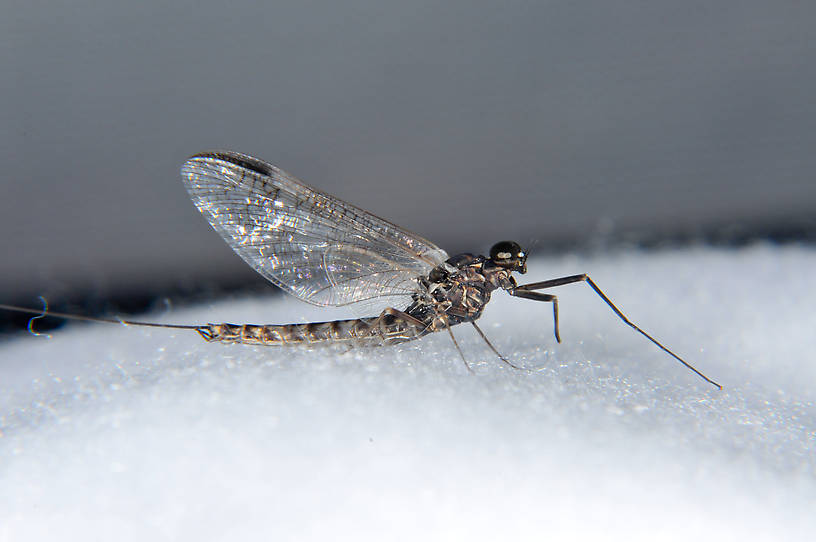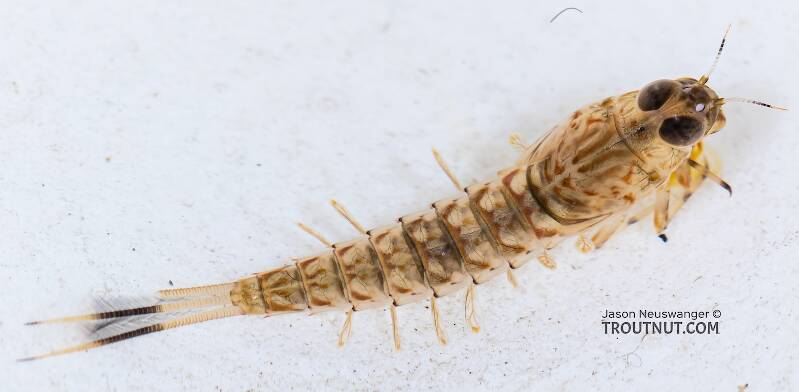
Salmonflies
Pteronarcys californica
The giant Salmonflies of the Western mountains are legendary for their proclivity to elicit consistent dry-fly action and ferocious strikes.


Mayfly Species Ameletus vernalis (Brown Duns)
Where & when
In 4 records from GBIF, adults of this species have been collected during May (50%), June (25%), and March (25%).
Species Range
Physical description
Most physical descriptions on Troutnut are direct or slightly edited quotes from the original scientific sources describing or updating the species, although there may be errors in copying them to this website. Such descriptions aren't always definitive, because species often turn out to be more variable than the original describers observed. In some cases, only a single specimen was described! However, they are useful starting points.
Male Spinner
Wing length: 12 mm
A large clear-winged species with faint mid-ventral ganglionic marks on the abdomen.
Head and thorax deep blackish brown, the sutures yellowish. Fore femur deep blackish brown, a faint yellowish tinge at the base and a yellow line along the upper edge; tibia and tarsus black. Femora of middle and hind legs marked like fore femur, but slightly paler; tibiae and tarsi light brown. Wings hyaline, the fore wings shaded with brown on the apex and with a slight brown tinge at the base of R3, where there is a group of 6 cross veins. Veins and cross veins brown except 3 or 4 costal cross veins beyond the bulla, which are pale and indistinct. Stigmatic cross veins anastomosed to form a series of smaller costal cells with larger ones below.
Abdominal segments 2-6 translucent, dull greyish white; segments 7-10 opaque yellowish. A dorsal series of deep purple-brown subtriangular patches is present on the tergites, the bases on the posterior margins, and with apices almost attaining the anterior margin. A similar series of lateral patches are brown in color, thus leaving pale anterior triangles between the darker ones. Tergite 9 is almost entirely brown. Sternites 2-6 show faint traces of mid-ventral brown spots connected by a fine line. Sternites 7 and 8 have brown lateral patches based on the posterior margins. Sternite 9 largely brown, yellowish on the posterior margin. Forceps deep smoky brown. A long spine below the penes on the inner side (see fig. 115).
Female Spinner
Venter of female largely tinged with purplish brown.
Specimens of the Mayfly Species Ameletus vernalis
3 Male Duns
2 Male Spinners
2 Nymphs
Start a Discussion of Ameletus vernalis
References
- Needham, James G., Jay R. Traver, and Yin-Chi Hsu. 1935. The Biology of Mayflies. Comstock Publishing Company, Inc.
Mayfly Species Ameletus vernalis (Brown Duns)
Species Range
Common Name
Resources
- NatureServe
- Integrated Taxonomic Information System
- Global Biodiversity Information Facility
- Described by McDunnough (1924)


